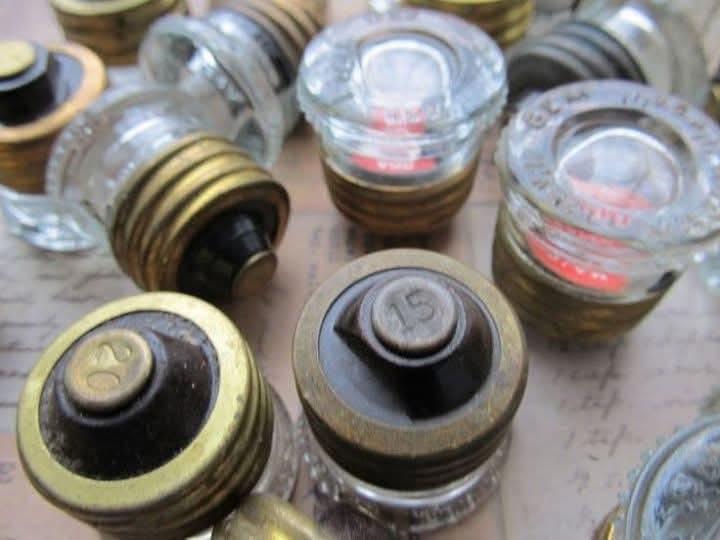In a world dominated by advanced technology and digital systems, artifacts from the past hold a special place. One such intriguing relic is the vintage screw-in plug clear glass fuse. These small, intricate items tell a story of electrical innovation and safety from a bygone era. They are not just functional devices but also a testament to the craftsmanship and design sensibilities of the early 20th century.
The vintage glass fuses in the image represent a critical evolution in electrical safety. These fuses were designed for household circuits during a time when electricity was becoming increasingly common in homes and businesses. Made with durable clear glass, they allowed users to easily inspect the status of the fuse. If the filament inside was broken, it indicated a blown fuse, signaling that the circuit was overloaded or faulty. This feature helped in maintaining safe electrical practices, reducing the risk of fires and accidents.
The screw-in design, paired with brass or metal bases, made these fuses easy to install and replace. Each fuse was labeled with its amp rating, such as “15” or “20,” indicating the amount of electrical current it could safely handle. This system ensured that circuits were protected according to their capacity.
Today, these vintage fuses are more than just historical artifacts. They are sought after by collectors, electricians, and vintage enthusiasts for their aesthetic appeal and historical significance. Some use them in restoration projects for antique machinery or homes, while others appreciate their design as decorative pieces. Their enduring charm lies in their combination of functionality and elegance—a hallmark of early 20th-century engineering.
Vintage glass fuses are a fascinating blend of practicality and artistry. They remind us of a time when electrical innovation was transforming daily life, yet safety and design were given equal importance. Whether appreciated as collectibles or studied for their historical value, these fuses remain a symbol of ingenuity and craftsmanship. By preserving and celebrating such items, we maintain a connection to the past, ensuring that the lessons and achievements of earlier generations continue to inspire us today.
